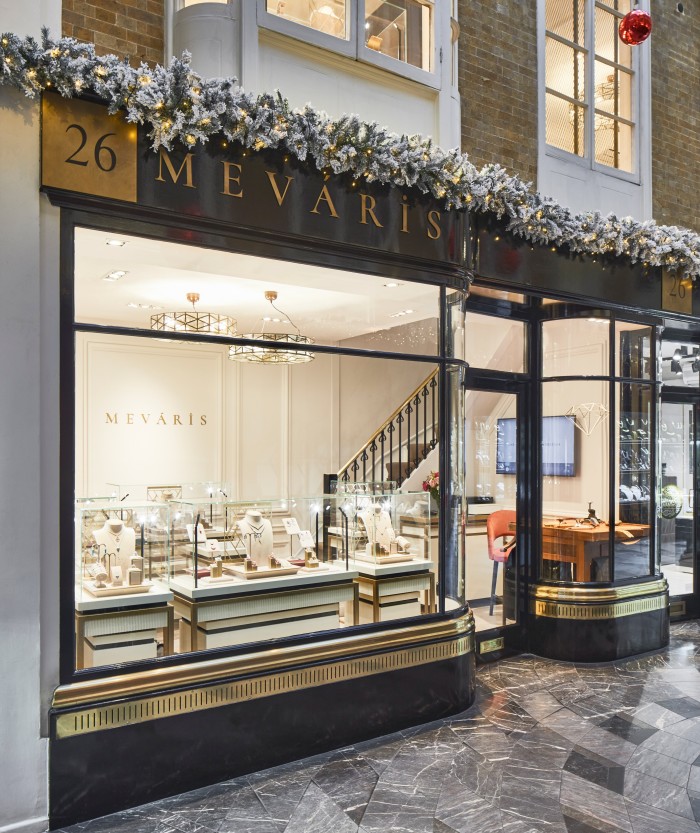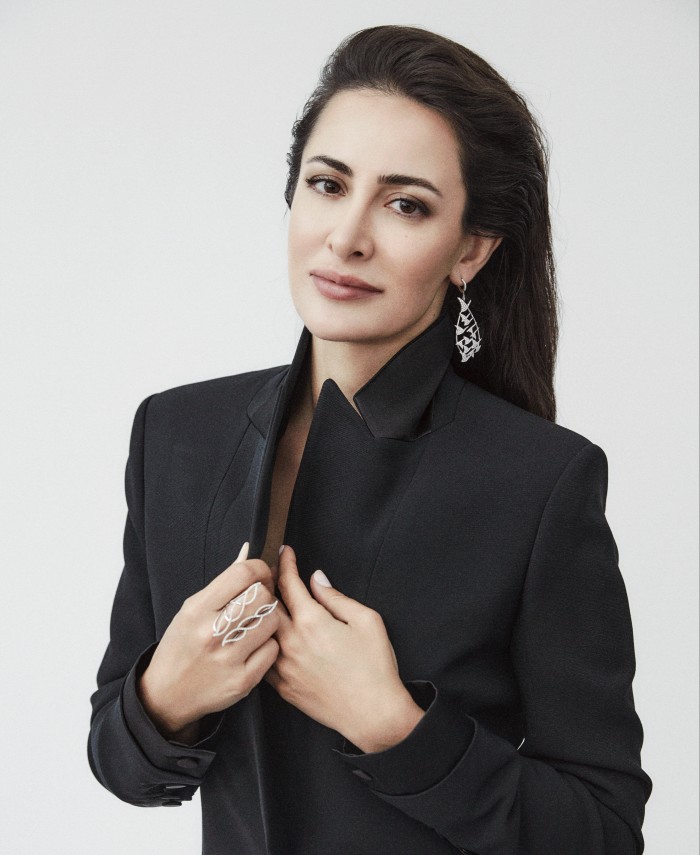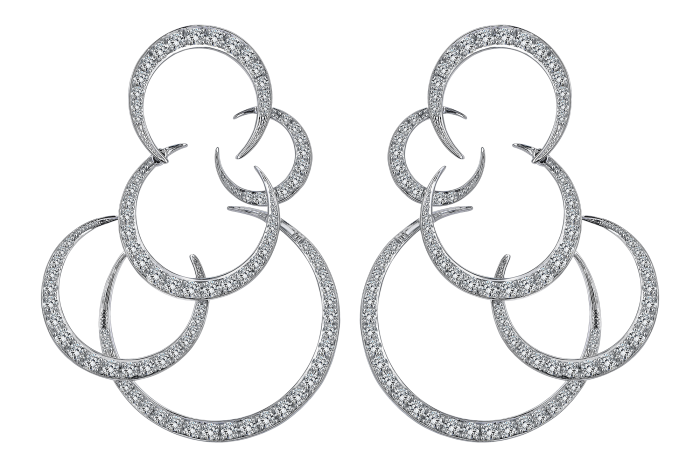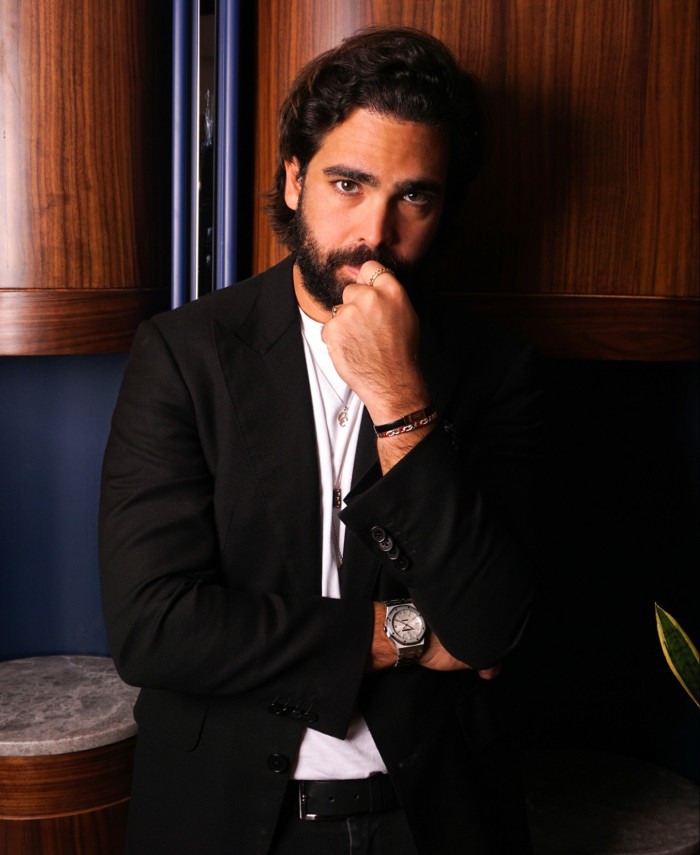Turkish jewellers bring shades of Istanbul’s Grand Bazaar to London

Simply sign up to the Retail & Consumer industry myFT Digest -- delivered directly to your inbox.
Built in 1461, the Grand Bazaar in Istanbul is the world’s first temple to luxury retailing — where goldsmiths gathered from across Anatolia to make jewellery. This was bought for weddings, for traditional gifting, and as an investment, but also traded as a stable currency.
Fatma Altinbas draws a parallel with London’s Burlington Arcade, where she opened Meváris, her first flagship boutique in December 2020. “It is historical like the Grand Bazaar, constructed for selling luxury products and I like that similarity,” says the jewellery entrepreneur. Altinbas is a cultural anthropologist and sociology lecturer from a family of gold merchants. Their business, bearing the family name, expanded in the 1980s and 1990s to become one of Turkey’s well-known jewellery brands.
“I wanted to follow my own path and create my own brand,” Altinbas explains. Her proximity to the riches of the Grand Bazaar, where her grandfather founded the family business, made her appreciate the ancestral skills of indigenous artisans and inspired her 2019 debut collection of jewels, called Heritage, created by such craftsmen. Meváris also means “heritage” in Turkish. Other collections are co-designed with jewellery students at Istanbul’s Altinbas University, established and funded by her family’s foundation. “I wanted to show the transformation from the authentic jewellery by the artisans to modern jewellery designed by a young team,” she says.
As creative director, she sets a brief — for instance, for her Moonlight collection, crescents are a symbolic motif. Students then submit designs. The best designs are selected for production and the students receive a fee as a reward.

“What we create is more fashion jewellery compared to Turkish people’s tastes,” she says, “but the young want more fashionable designs”.
Despite having opened in London during the pandemic, which has since delayed expansion to New York, she sees the UK capital as a hub to establish her independence.
She is not alone. Other independent Turkish designers have arrived in London introducing a modern aesthetic that, while it has its roots in Byzantine and Ottoman style, has none of the talismanic motifs of their heritage.

Melis Goral, who recently hosted a trunk show at a private members club in Mayfair, says: “London is key for global connections, and I would have been here last year if it wasn’t for the pandemic.” Cem Terzihan — a fellow jeweller who, alongside his brother, Can, leads the second generation of a family business founded in the 1970s in the Grand Bazaar — agrees: “A presence in London is important, especially with our Middle Eastern clients.”
These jewellers bring with them the vibrancy and craftsmanship of Istanbul, but their designs are contemporary.
Goral finds inspiration in Art Deco and geometry, while Terzihan describes his style as modern but loyal to his family roots. “It is the aesthetic of the pieces: asymmetry, sharp lines, nothing rounded, and hard stones such as malachite, lapis lazuli and white agate cut into courageous unusual shapes, set with diamonds,” he says. This style is evident in Terzihan’s gender-neutral core Neutra collection — very different to traditional Ottoman jewellery, which is marked by its Fatima hand and guardian eye motifs.

Goral, who opened her Istanbul showroom in 2014, loves architecture and strong shapes. She is open to new techniques, materials and working with a monochromatic palette — for example, the tiger’s eye cocktail rings layered with yellow topaz in her La Linea collection, and the Art Deco onyx and diamond monochrome of her Deep Space collection. These are gathering a following among Turkey’s social media-savvy generation.
“It is not about the size of the stones but the design aesthetic that they want, she says”
This design vocabulary is worlds away from the traditional gold filigree work her maternal grandfather, a craftsman and merchant in the Grand Bazaar, produced from the 1930s. Her father specialised in big gemstones for occasions like weddings and it was in his atelier where Goral became immersed in jewellery as a teenager.
“I designed young girls’ pieces like heart-shaped pendants and my father had some of them made as gifts for me,” she remembers. She studied jewellery design in Milan, but it was not until she surprised her father 10 years ago, with an exhibition of jewellery she secretly had made by the artisans in the bazaar, that he accepted she was serious about her vocation.
Cem Terzihan’s family maintains a small jewellery stall and atelier in the Grand Bazaar, but their horizons for the brand stretch beyond the Bosphorus. They have a second base in Portugal and plan to expand their business by opening up more stockists in the next three years.
“When we say we are Turkish jewellery designers people expect something traditional and big, but what we do creates as much impact.”
Comments